Had enough of night markets and shopping and want to enjoy some of Taiwan’s great outdoors on your quick weekend trip to Taipei? Nature is never far from Taiwan’s buzzing capital – a quick bus or MRT ride will take you up into the many mountains that make up Taiwan’s landscape where you can breathe deep and easily enjoy great outdoor activities in Taipei and the surrounding New Taipei City.
Budget airline Scoot challenged me to explore and uncover some of the more interesting things to do in Taipei and its surrounding area, so in this edition I put on my trekking shoes and embrace nature to bring you some of the more unusual outdoor activities in Taipei that you can check out without having to go too far.
This post was produced in collaboration with Scoot which flies from Singapore to Taipei everyday. Looking for more posts about Taiwan? Check out my #TaiwanderingWithScoot posts as well.
Cycling Taipei’s Riverside Parks
One of the best ways to enjoy Taipei is to hop on a bike and take a pedal around the city, and one of the easiest ways to enjoy some greenery while getting your exploration done is to cycle along the many riverside parks. These idyllic green spots along Taipei’s main Tamsui River and Keelung River are spacious and much more pleasant than navigating city traffic, and many are near to tourist attractions/MRT stations so you can plan your sightseeing itinerary around it.

Join the locals as you enjoy the river view, stop at the random photo stop structures or work out on the many park facilities. You can rent bicycles in many of the riverside parks, but I usually prefer to hop on the orange YouBikes that you can find all over the city, usually one close to an MRT station. Download the YouBike app which is really great in helping you locate the nearest YouBike station, and use your EasyCard to easily rent and return your bike.
This is a pretty useful cycling map by the Taiwan Tourism Bureau, but here are my recommendations based on my own experience:
Jingmei 景美 to Longshan 龍山
I cycled along this stretch in the afternoon and enjoyed a glorious sunset as it is west facing. I suggest starting at Jingmei Riverside Park because it’s not far from Jingmei MRT Station on the Green Songshan-Xindian Line, and then going up northwards.
A nice stopover along the way would be the Treasure Hill Artist Village at Gongguan, an old military village converted into art studios and galleries. Or for something quirky, the Museum of Drinking Water.
Ideally for exploration, I would say go all the way up to Yanping Riverside Park which takes you right next to Dihua Street and the Dadaocheng Wharf area, or Longshan Riverside Park which is next to Ximending, but I really didn’t like cycling that stretch because you are right next to the the freeways and road it’s smoky and loud.
So my suggestion would be to turn out at Shuangyuan Riverside Park and finish your journey at Longshan Temple MRT on the Blue Bannan Line, and either walking or taking the MRT to explore the Wanhua and Dadaocheng districts from there.
Dazhi 大直 to Songshan 松山
Head up north to the Zhongshan District near the Songshan airport and start from Dazhi MRT Station on the Brown Wenhu Line. You can either start from Meiti Riverside Park on the Zhongshan side or Yingfeng Riverside Park on the Songshan side – they run parallel to each other anyway and there are bridges linking both sides that you can cross on your bike.
I found a couple of legal graffiti walls at Meiti and Yingfeng Riverside Parks where you can see throw ups and tags, these will be regularly painted over by the government but provides an outlet for aspiring street artists to work.

A nice area for a break here is Fujin Street 富錦街, the upcoming hipster neighbourhood stretch with indie shops and cafes though it is a tad pricey. It’s great for chilling out and people watching though. This route is right next to the Songshan airport so it’s fun for plane spotters as well.
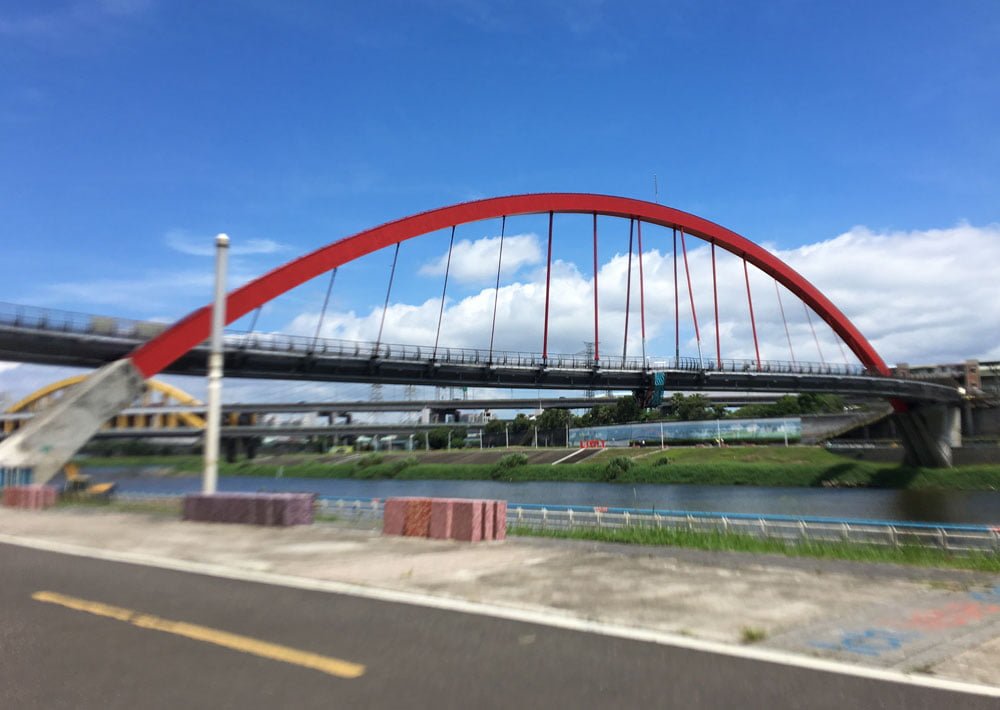
I suggest riding this route in the evening so that you can end up at the Rainbow Bridge which marks Songshan and the Raohe Night Market where you can reward yourself with street food after a vigorous day of cycling.
Guandu 關渡 to Fisherman’s Wharf 淡水漁人碼頭
In my Weekend Warrior post, I recommended riding south from Bali Left Bank and crossing the bridge to Guandu. An alternative would be to ride northwards on the right bank starting from Guandu MRT Station.
Along the way you’ll pass by Guandu Nature Reserve and lots of mangrove forests, and Tamsui is a nice place to rest and grab a bite in. From there, you can keep going up north past Fort Domingo or get off your bike and take a boat instead.
Trek and sip tea at Thousand Island Lake 千島湖
Taipei has so many options for those who love mountains and hiking. Honestly I’m not much of a trekker, but I can appreciate a good view, which is how I decided to venture south of Taipei to a rural spot in the mountains called Shiding 石碇 and check out a spot called Thousand Island Lake or Qiandaohu.
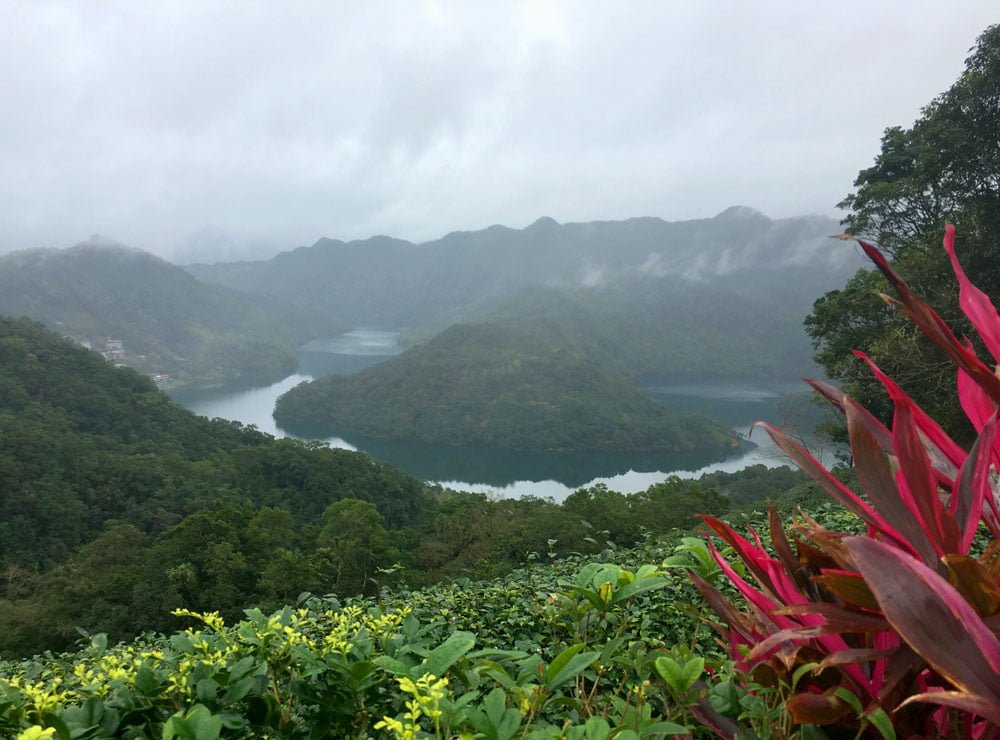
Thousand Island Lake is actually an artificial body of water created in the 80s when the surrounding mountain area was flooded to form Feicui Reservoir 翡翠水庫 and provide a water source for the residents in Taipei and New Taipei City. To manage your expectations, there aren’t actually a thousand islands in this lake, but it’s more the twisty mountain range that gives that effect.
I had pretty drizzly weather when I was there, so my emerald hills and turquoise waters ended up being cool misty mountains instead – afternoon is usually clearer than morning if you don’t want fog in your pictures.
What’s special about this area is that it is renowned for growing tea, and as you hike down the road, you’ll see terraces of tea cut into the hillside which makes for pretty pictures. If you get hungry, there are a handful of little restaurants or eateries to stop in along the way. Most offer a pretty view of the surrounding lake as well.
I trekked for about an hour before I decided to stop at the Bagua tea plantation 八卦茶園, where there is a viewpoint on a little hillock and a restaurant that serves food and refreshments and tea, but unfortunately the day I was there they weren’t serving any hot food. I did get myself a toufu ice cream though.


How to get to Thousand Island Lake on your own
Shiding used to be a much more popular area as vehicles would have to pass through this mountain route to get to Yilan, but after the more direct Hsuehshan tunnel was built through the mountains, few people these days take this path as it is super winding and narrow. If you get carsick easily, pop a few motion sickness pills before you attempt to get here.
From Taipei Main Station, I took the Green MRT line down south to Xindian Station 新店捷運站, and right at the MRT station exit is the bus station where I hopped onto the Green绿 #12 bus towards Pinglin 坪林. You’ll want to stop at Shisangu 十三股 stop – the bus journey took me about 40 minutes.
From the bus stop, walk straight down the road towards the curve and you’ll see this road with an arch and lots of signboards – head down that road and just keep walking. Having Google Maps is really useful to make sure you keep on the right track, though it’s pretty well sign posted.

Note that from this point on, every step you take brings you downhill and it gets quite steep in places. If you are planning to hike all the way, just prep yourself for the return journey. Otherwise, do what I did and call the local cab service – the lady at the Bagua Tea Plantation helped me call the local van service who drove me back to the bus stop for 100 NTD (S$4), which if you ask me is money very well spent.
Some other alternatives worth checking out:
- Booking a driver for the day to take you from Taipei, you can then combine it with visiting Shiding Old Street and Pinglin (more below). I wish I saw this Klook private car charter option from Taipei earlier because you need 2-3 days advance notice to book it. It’s a bit pricey for solo travellers but not a bad deal for small groups and good for you to save time.
- Take a guided daytour – this Klook daytour [klook affiliate link] takes you to Thousand Island Lake and then to Pinglin for tea tasting about S$60-70 from 730am-1230pm which is not that expensive and a great way to save time
- The taxi service is basically local people living around the area, and they provide a half/full day van service option as well which might be worth considering as well.
Nearby: Shiding Old Street and Pinglin
You might think that given the name of the district, Shiding Old Street 石碇老街 would be a nearby option to check out, which you could do in a day if you had your own transport and started out early enough, but by public bus it’s not possible – trust me, I tried. To get to Shiding Old Street by public bus from Taipei, head to Jingmei Station (also on the green line) Exit 2 (Jingzhong Road) and take Bus #666.
The town of Shiding is known for its buildings that hang over the water, and most Taiwanese like to head over there on the weekend for the street bites along the old street and to enjoy a bit of mountain trekking. My taxi driver dropped me too early at the town of Shuangxi instead so I ended up on an impromptu 30min hike to get to the Old Street, which turned out to be a nice surprise as it was pretty scenic and not too hard. I ran into a number of other hikers walking around the area as well.
After trekking Thousand Island Lake in the morning, I continued on the Green #12 bus down to Pinglin 坪林, another town famous for tea. Tea lovers can take a break in the many, many tea shops here. I popped into the Pinglin Tea Museum which is a small 2-storey museum that has interactive displays all about tea in Taiwan. There is a Pinglin Old Street as well, which is narrow cobblestoned streets and traditional wares, and there is also the Daiyujue Cycling Route, a beautiful and underrated if you have a bit more time – check out this article for more.

Both these places are apparently much more vibrant on the weekends – weekdays are quieter as many of the stalls are closed, so if you want the atmosphere, consider doing this trip on the weekend instead.
Learn to climb trees from professionals
I grew up in Singapore in a time when I was more used to seeing tall buildings than tall trees – climbing trees was a fantasy I read about in Enid Blyton books and not something we did here just because it’s hard to 1. find giant trees in Singapore and 2. actually be able to climb them. So discovering that one of the more unusual outdoor activities I could learn to do in Taiwan was to climb a tree… I was immediately sold on the idea.
Tree climbing in Taiwan started out as a profession where people employed special rope climbing techniques to take care of trees, but it gradually became a leisure activity which is starting to become more well known in Taiwan.
I headed out to Taoyuan one morning and met the folks from Oudo who took me to a remote forested area with some great tall trees and where I met my tree climbing guide for the day, Nengneng, Taiwan’s top female competitive tree climber – there are international tree climbing competitions. I climbed with a group of Taiwanese ladies of various ages and fitness levels that happened to be on their own group outing that day.
The day started off with safety briefings and demonstrations as the instructors showed us how to strap in to the gear and be safe. Tree climbing is similar to rock climbing in that that it uses ropes and harnesses, but they’ve been modified to protect the tree better. Also, a lot of the climbing actually takes place on the rope itself and not the actual tree.

I definitely had more of a workout than I expected – my limbs were so sore at the end of the day, but I really enjoyed the process. We climbed 2 trees that day, 1 in the morning and another in the afternoon. The surrounding area is pretty remote, so it was nice to perch up in the boughs of the tree and enjoy the view from up high.
It’s also a very social activity as you spend a lot of time chatting with each other – the point isn’t really to climb up as quickly as possible, but to just enjoy the process and appreciate the trees from up close. I’m a city girl through and through, so it’s rare I actually spend that much time touching a tree, or even just being near one.
Our instructor had many stories about her tree climbing experiences and the wildlife she spotted in trees, as well as the trees around Taiwan. I even made friends with my Taiwanese climbing mates and had dinner with one of them after that.
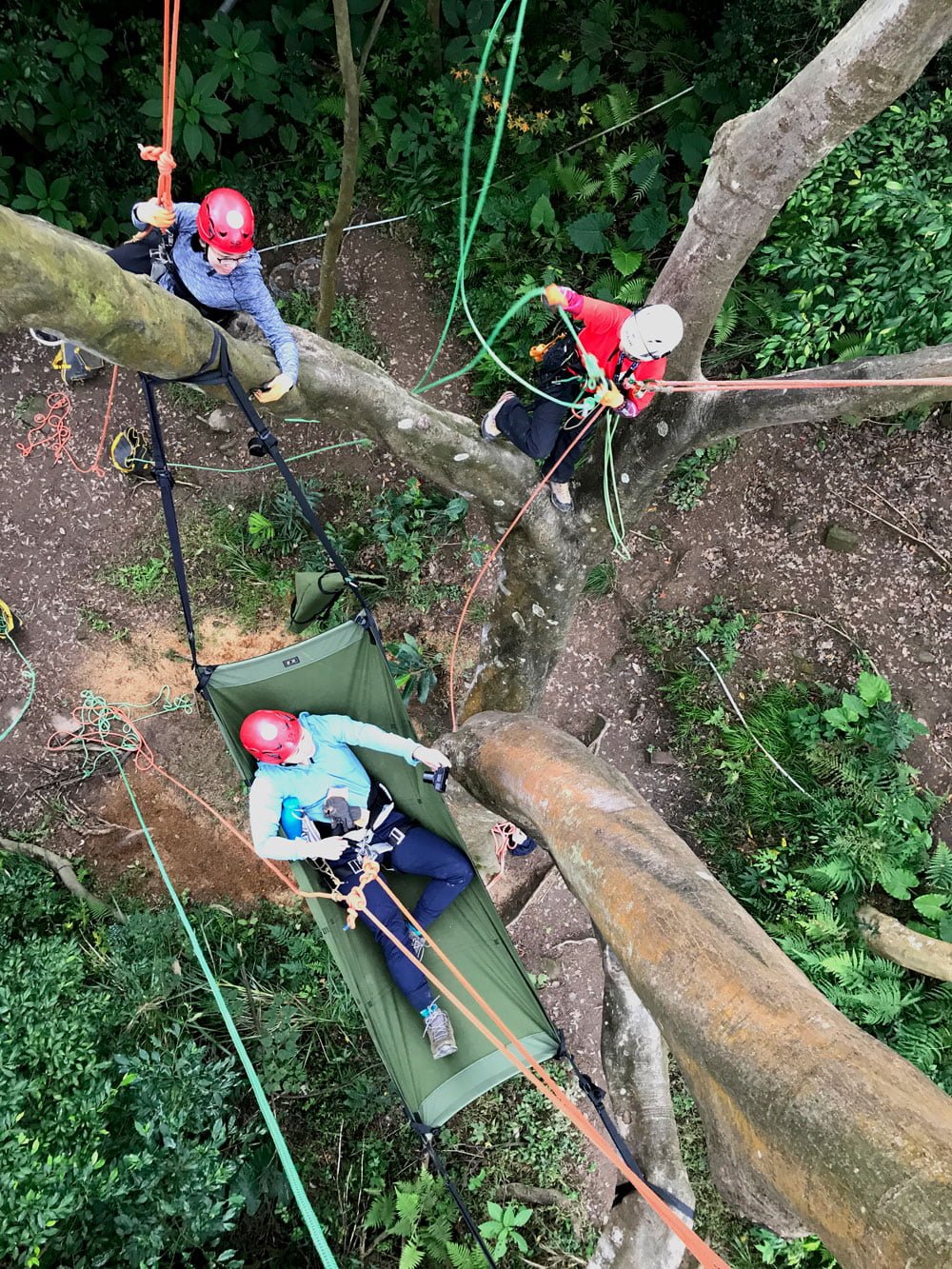
How to book your tree climbing experience
The easiest way to book your tree climbing experience is online – I booked my Taoyuan Tree Climbing Experience via Oudo. It costs 1,400 NTD (S$62) per pax and takes up most of your day as you start at 9am and finish around 5-6pm. A lunchbox is provided on site, and you typically do two climbs, one in the morning and one after lunch. Wear long pants (there’s a part of your calf that will rub the rope a fair bit) and good shoes, and I suggest a light jacket in case you get too warm while climbing as it can get pretty strenuous. Also, stretch before and after or be prepared to ache a lot the next day.
The venue of the activity is in Taoyuan and it is recommended you have your own transport or taxi/car arrangements as it’s not easily accessible by public transport – if you are on your own I suggest taking the train from Taipei to Taoyuan (30-40 mins) and then taking a taxi. More information will be sent to you upon confirmation of the activity.
My tree climbing experience was sponsored by Oudo, thanks again to Jason for helping to facilitate this experience. I hope to check out some of their other outdoor activities like river tracing and SUP when the weather is warmer as this took place in January/winter.
I decided to take it a little easier and flew up on TR996 (A320) from Singapore to Taipei (0830-1315), arriving in Taipei in good time to check in to my room. The return leg from Taipei to Singapore was on TR899 (1610-2045) – I spent my morning doing some last minute shopping before heading to the airport.
I got to check out some of the new items on the Scoot Cafe menu on this trip as well:
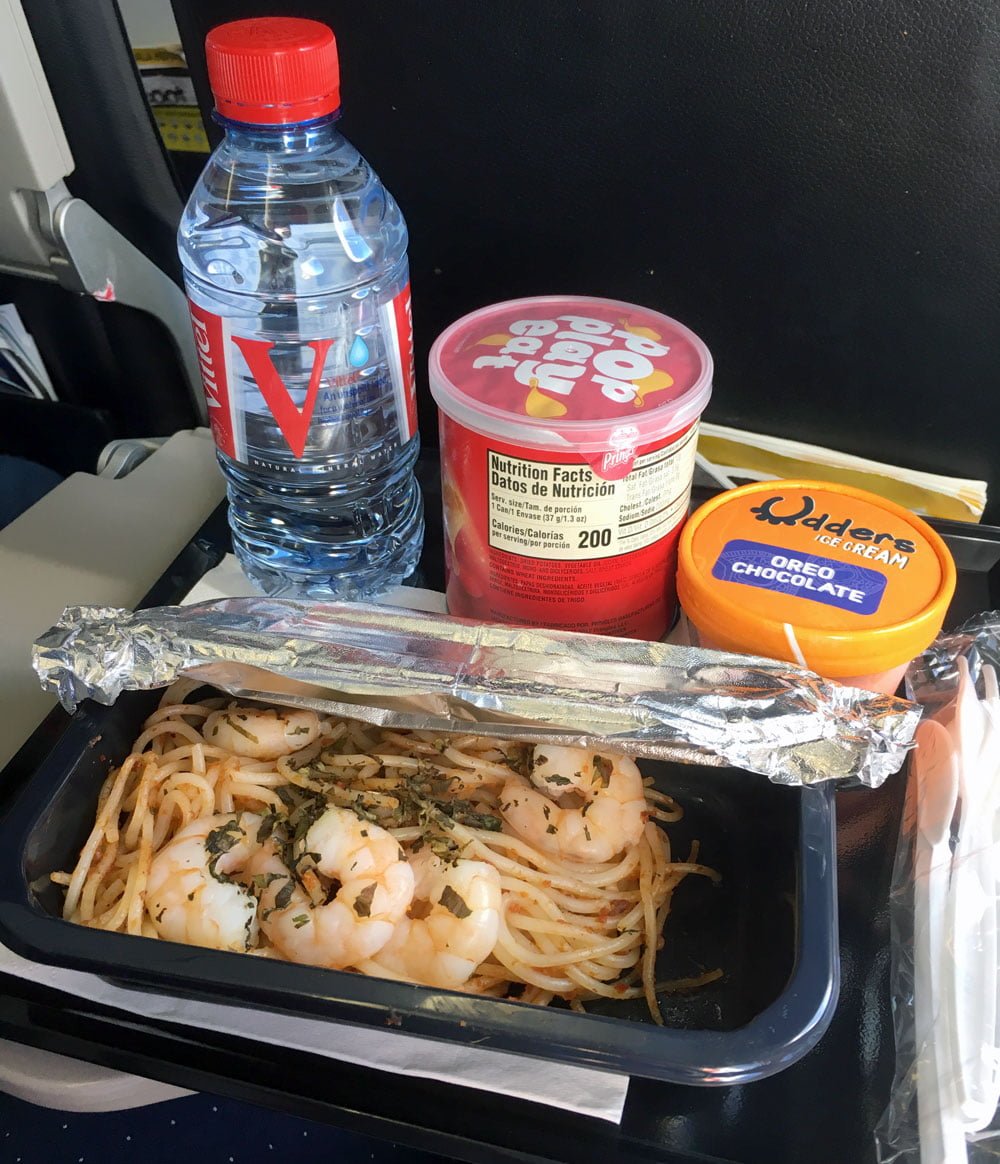

This trip was sponsored and produced in collaboration with as part of a series exploring Taipei and its surroundings. Check out the other #TaiwanderingWithScoot articles here, or see all my Taiwan content.



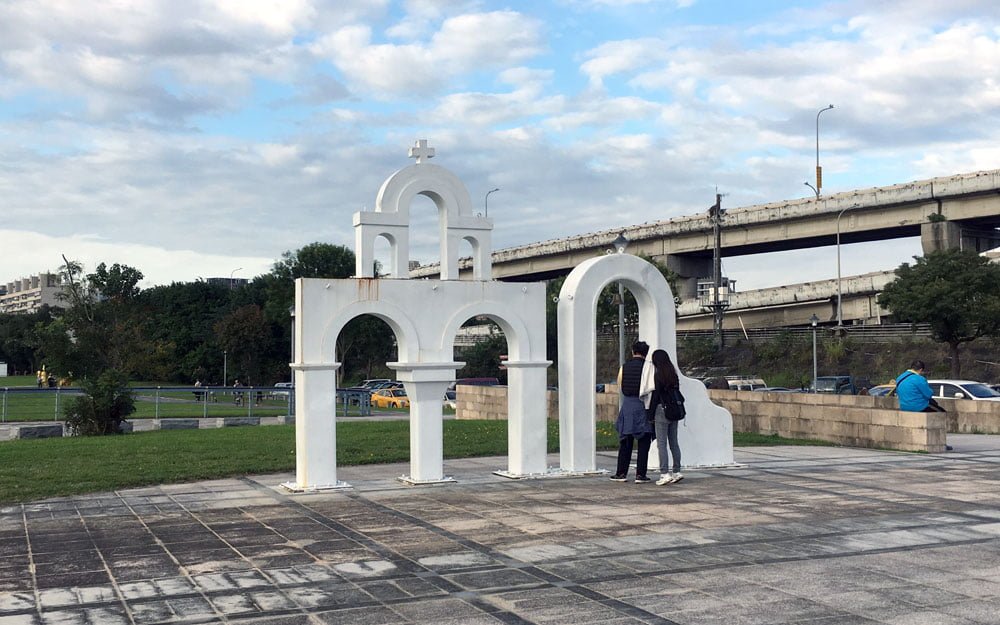
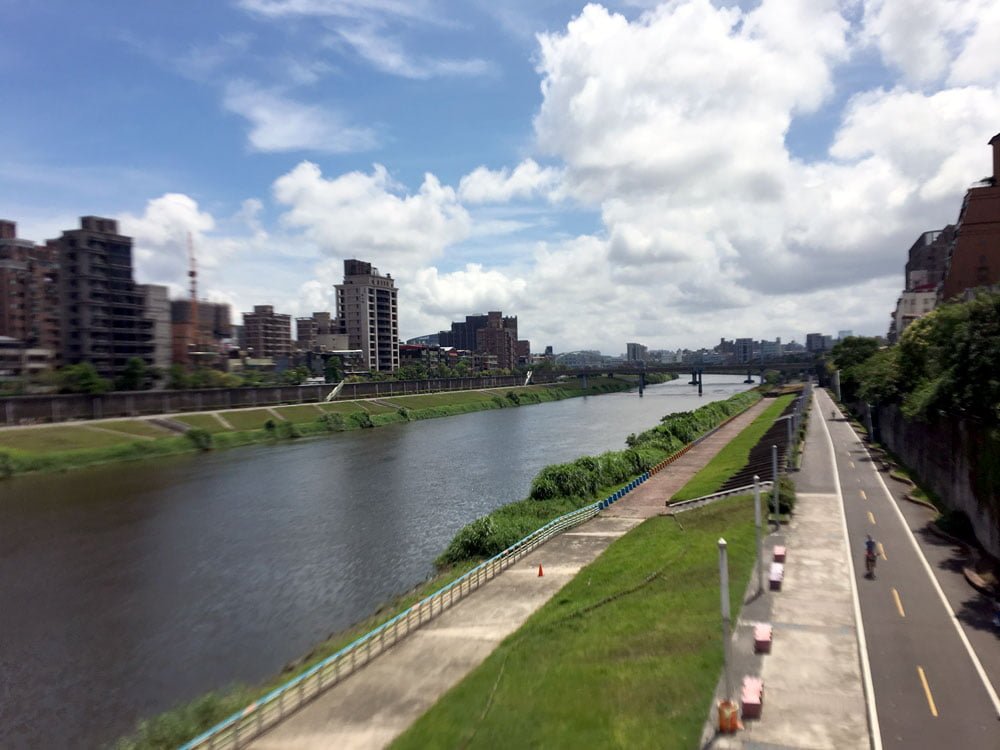


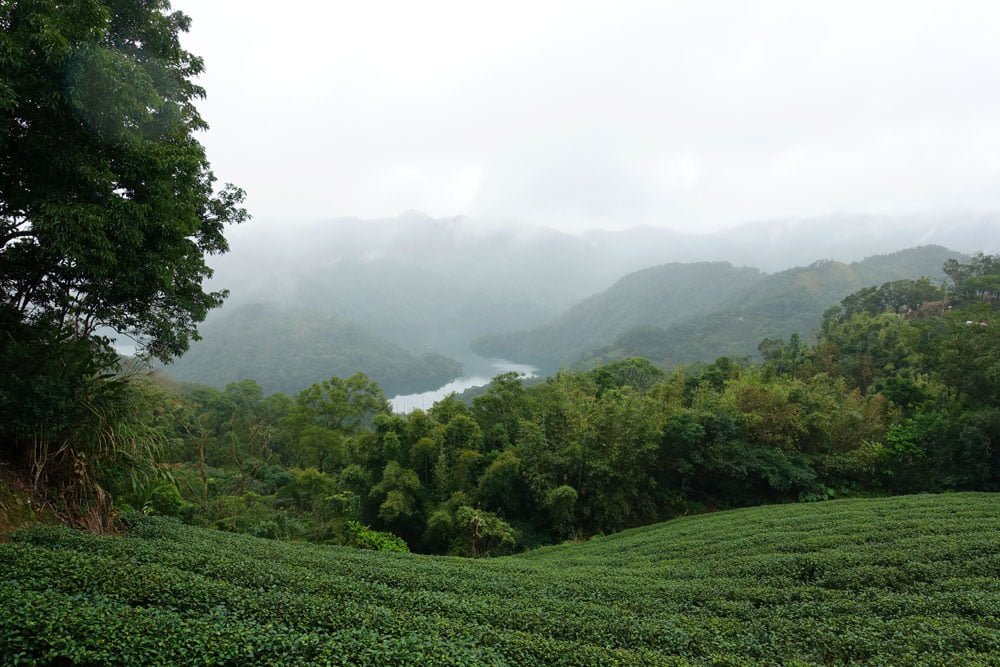

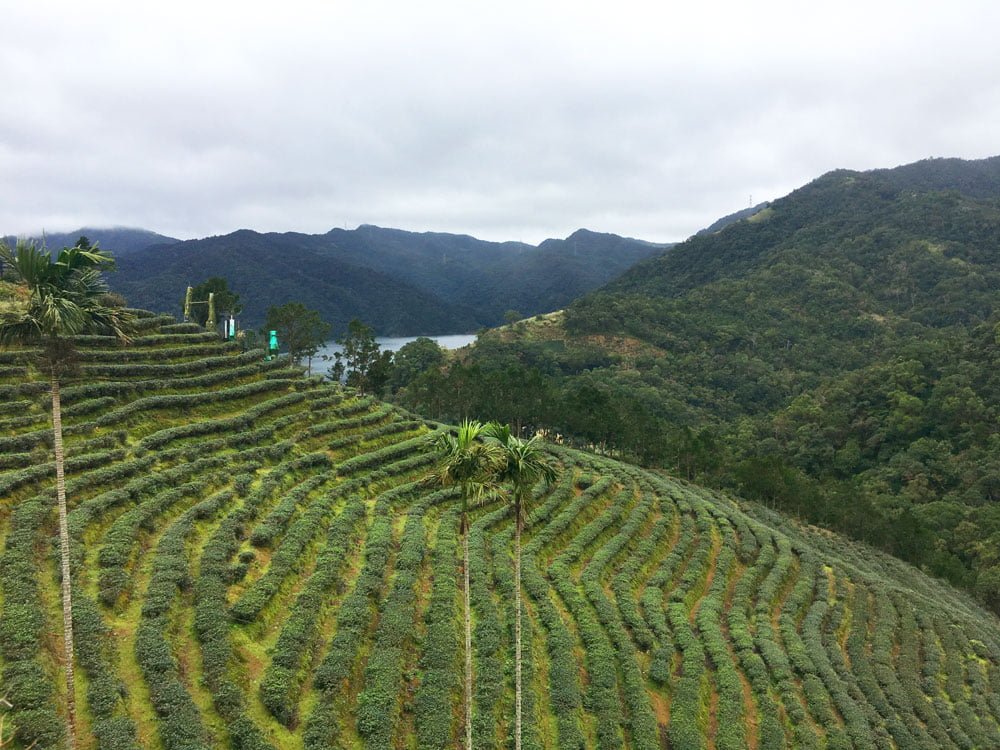
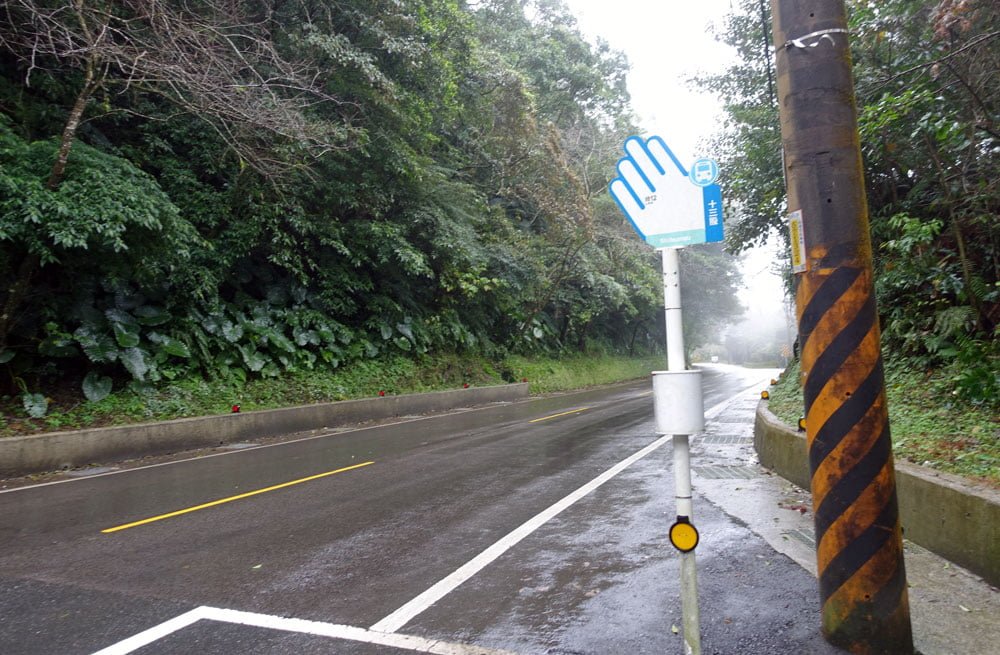

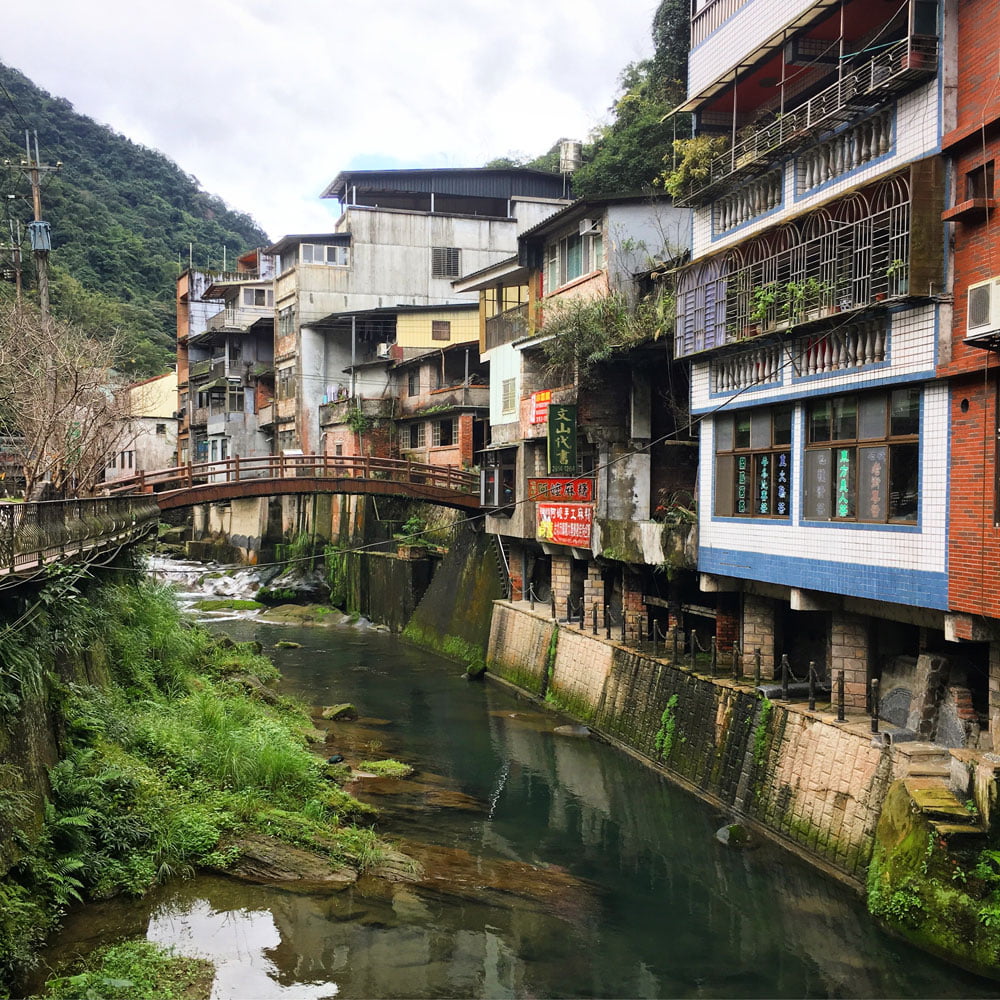
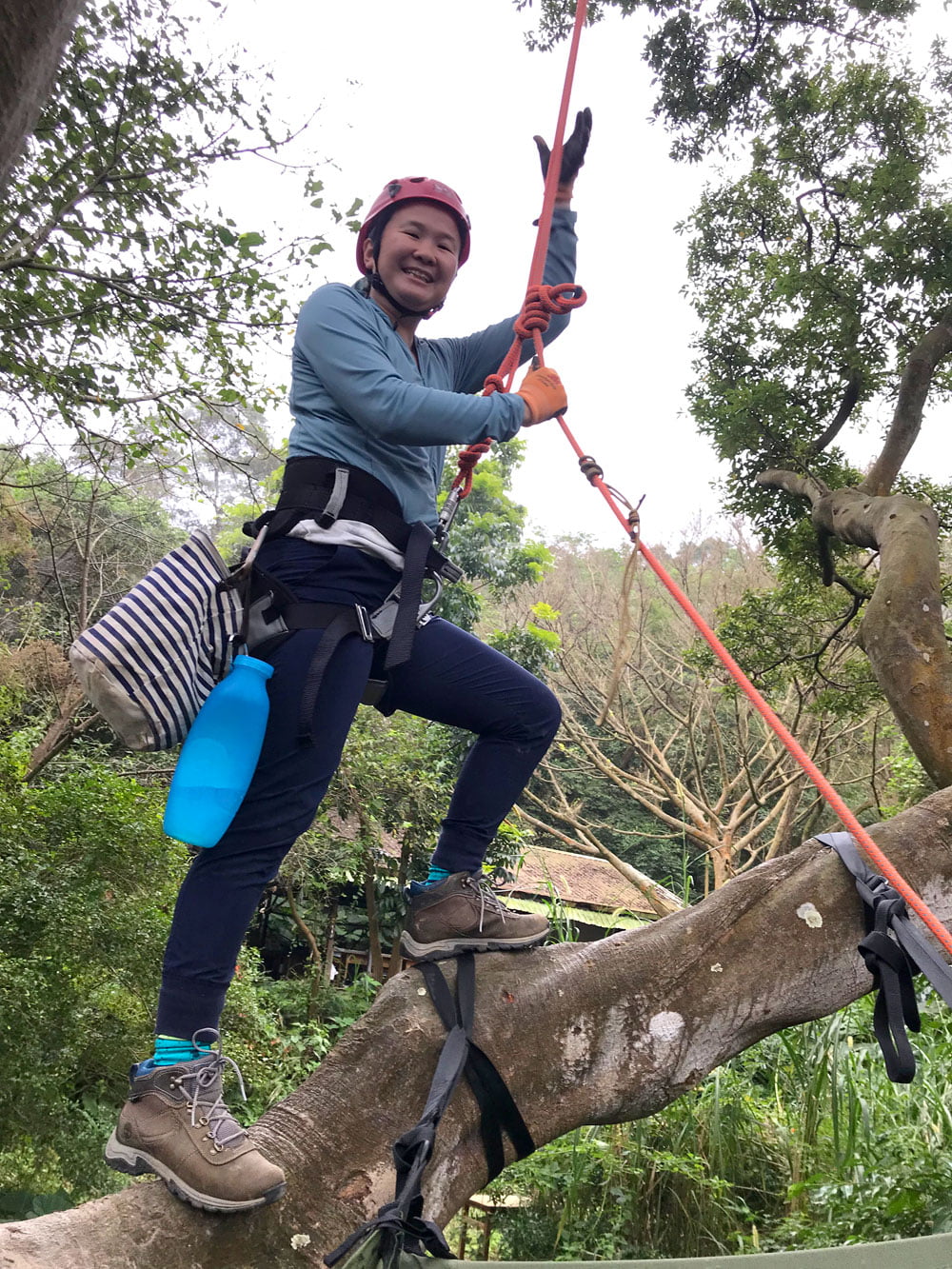
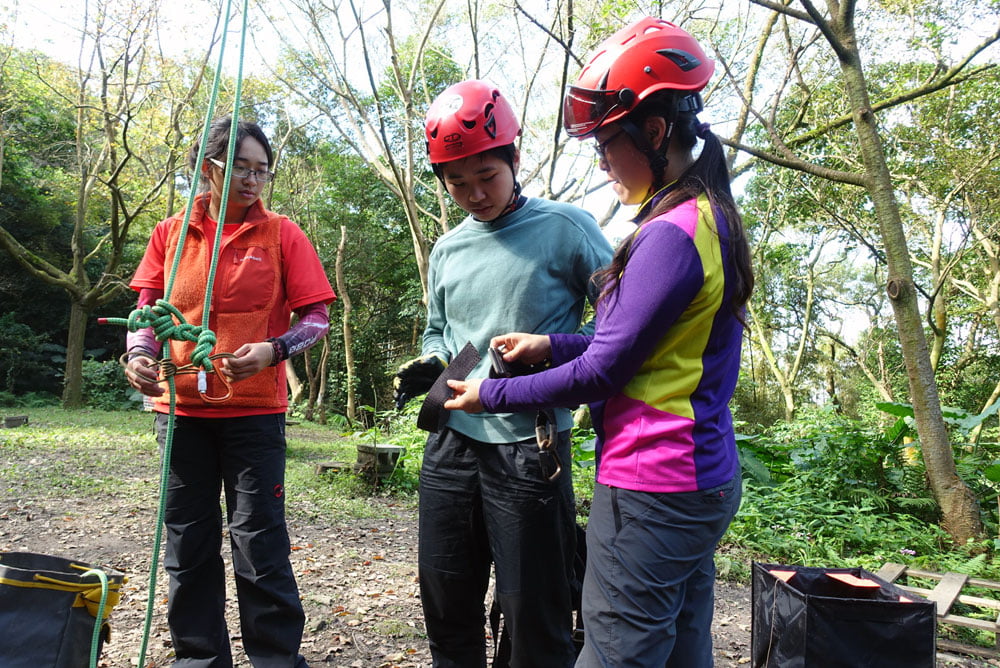


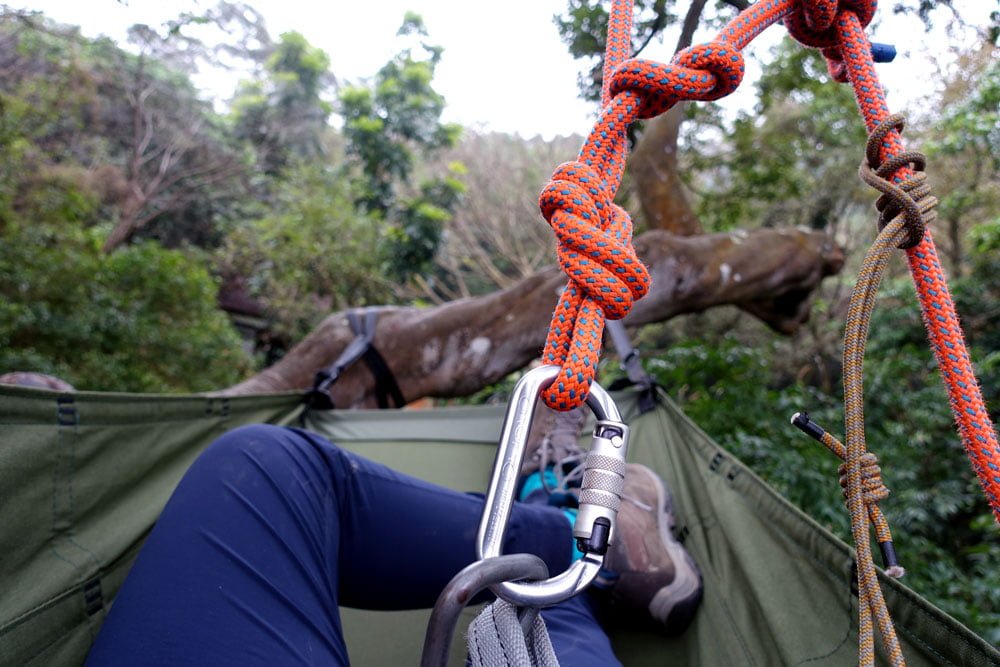
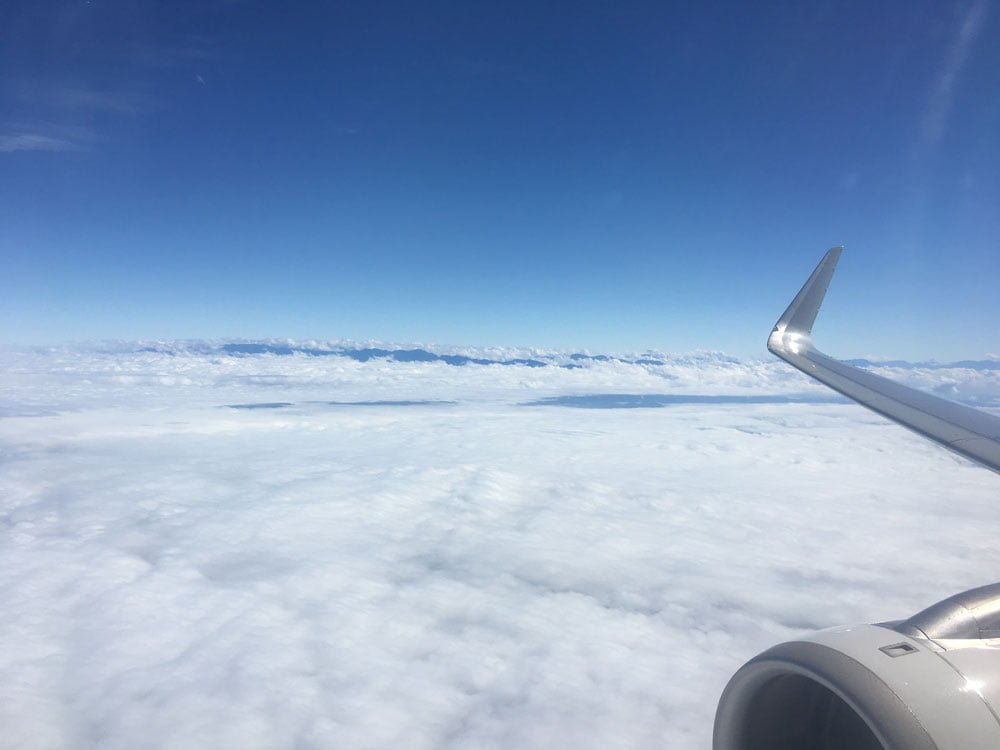
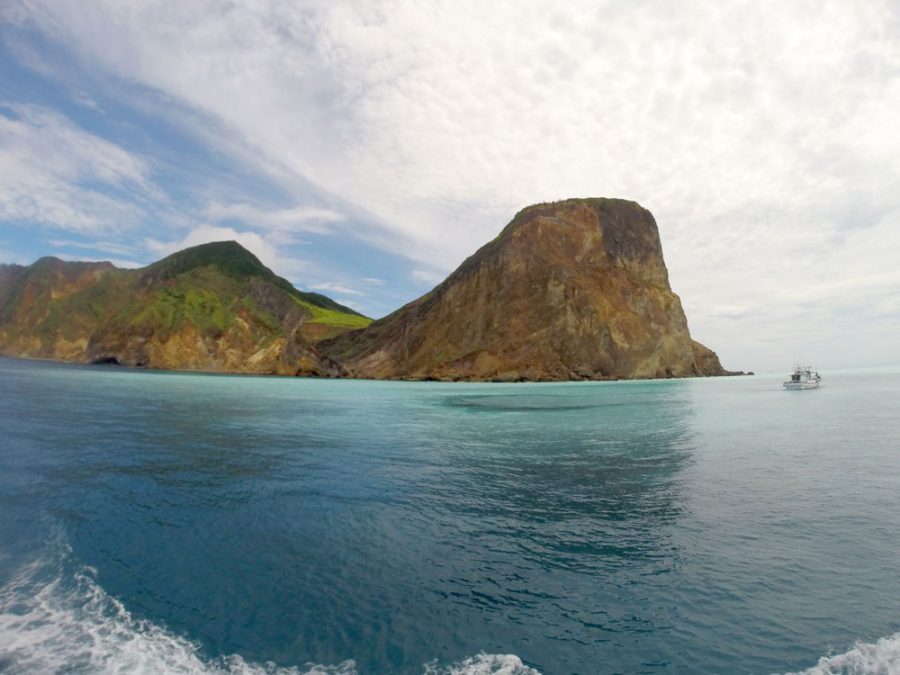


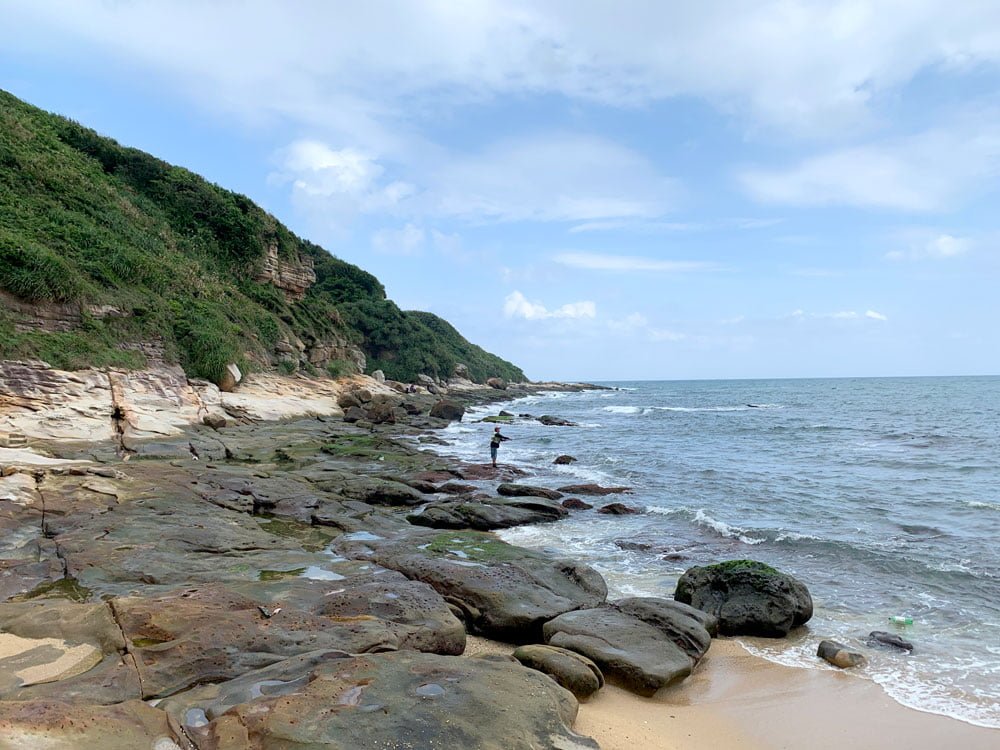

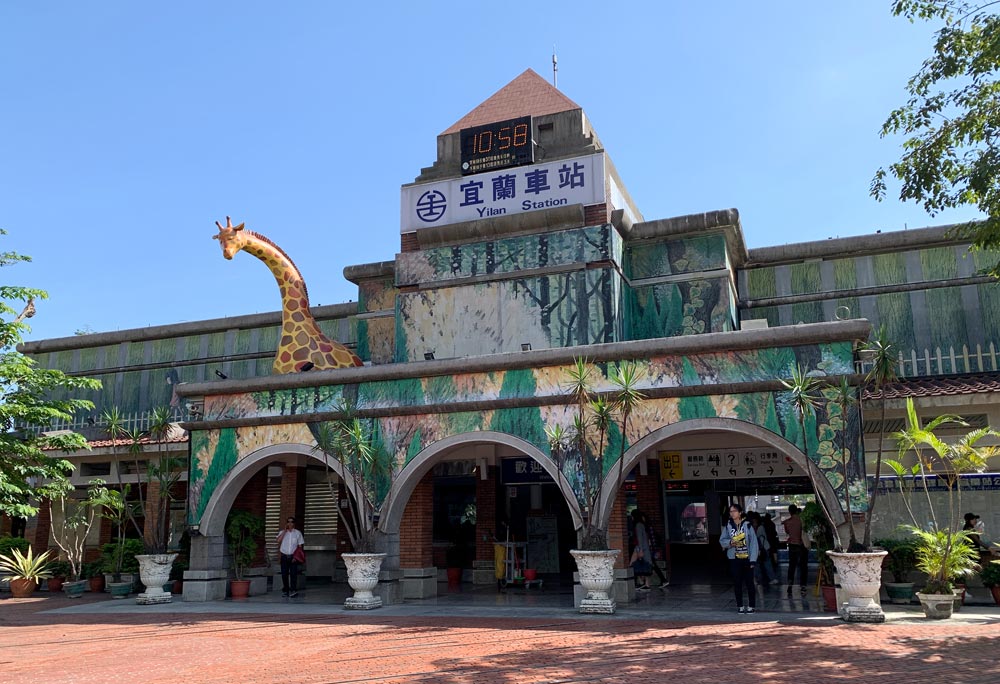
Kelly
Sunday 3rd of February 2019
What an amazing list of activities! I would love to learn how to climb trees or visit Fisherman's Wharf or cycle through the riverside parks. Great share.